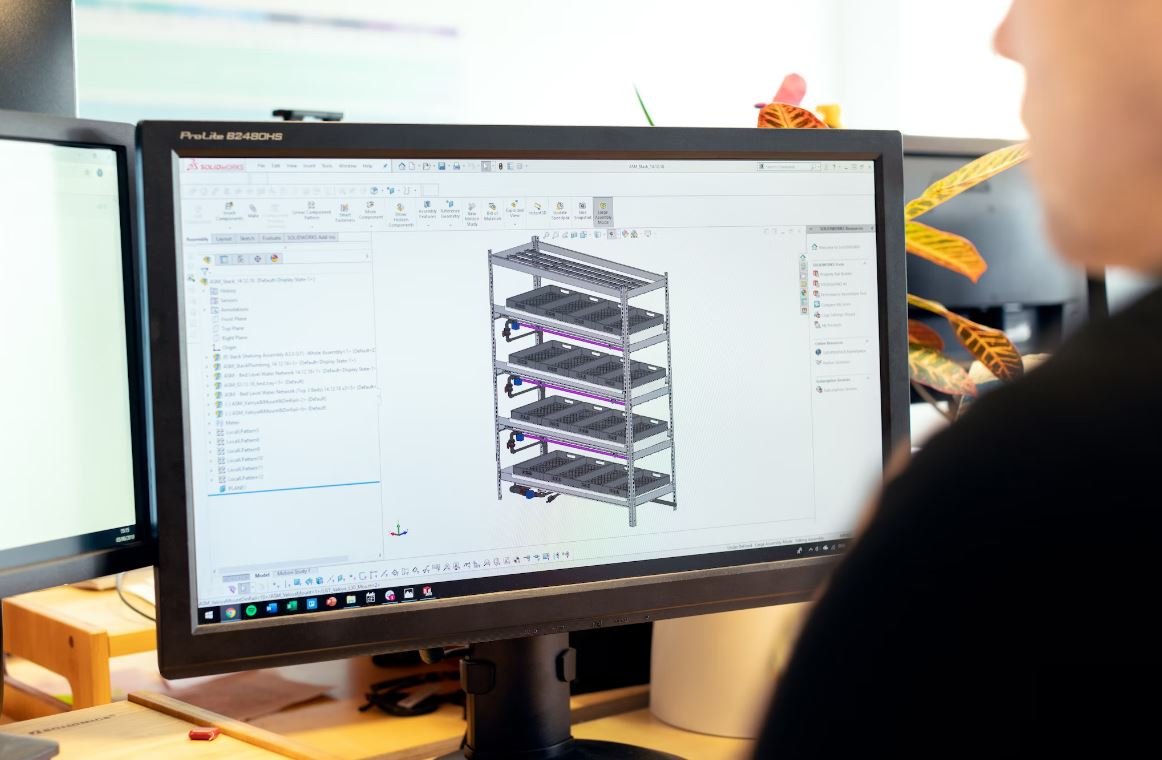Anything That Has Mass and Volume
Mass and volume are fundamental properties of matter. Understanding these concepts is essential in various fields of science and everyday life. In this article, we will explore what it means for an object to have mass and volume, their significance, and how they are measured. Whether you’re a science enthusiast or simply curious about the world around you, this article will provide valuable insights.
Key Takeaways:
- Mass is a measure of the amount of matter in an object.
- Volume refers to the amount of space occupied by an object or substance.
- Mass and volume are independent of each other, meaning an object can have the same mass but different volumes, and vice versa.
- Mass is typically measured using a balance or a scale, while volume can be determined through various methods such as measuring dimensions or using displacement.
Mass: The Measure of Matter
Mass is a fundamental property of matter and represents the quantity of matter in an object. It determines the object’s inertia, which is its resistance to changes in motion. The standard unit of mass in the International System of Units (SI) is the kilogram (kg).
**Mass can range from extremely small values, such as the mass of an electron, to enormous values, such as the mass of a planet.** This property is crucial in understanding the behavior of objects under the influence of forces, such as gravity.
**For instance, a feather and a stone can have the same mass (measured in kilograms), but their volumes would be significantly different.** This shows that mass does not depend on an object’s shape.
Volume: How Much Space?
Volume refers to the amount of space occupied by an object or substance. It is a measure of how much three-dimensional space is enclosed within the boundaries of an object. The SI unit of volume is the cubic meter (m³), but other units like liters (L) and cubic centimeters (cm³) are commonly used as well.
**The volume of regular-shaped objects can often be calculated using mathematical formulas, while irregular-shaped objects may require more complex techniques such as water displacement.**
**For example, a wooden block and a sponge may have the same mass, but their volumes would be vastly different.** The volume determines how much space the object occupies, regardless of its mass.
Measuring Mass and Volume
**Mass is typically measured using a balance or a scale**, which compares the unknown mass to a known mass. This allows for accurate determination of an object’s mass in relation to a defined standard.
**Volume can be measured using various methods**, depending on the object’s shape and properties. Some common techniques include measuring length, width, and height to calculate volume, or using the displacement method by immersing an object in a liquid and measuring the change in liquid volume.
**It is fascinating to note that mass and volume play crucial roles in a wide range of scientific disciplines such as physics, chemistry, and engineering, as well as in practical applications like cooking and manufacturing.** By understanding these concepts, we can better comprehend the world around us and make informed decisions in our daily lives.
| Object | Mass (kg) | Volume (m³) |
|---|---|---|
| Iron Bar | 10 | 0.5 |
| Wooden Box | 10 | 1 |
| Unit | Mass | Volume |
|---|---|---|
| Kilogram (kg) | Standard unit | N/A |
| Liter (L) | N/A | Standard unit |
| Cubic Meter (m³) | N/A | Standard unit |
| Object | Mass (kg) | Volume (m³) |
|---|---|---|
| Human | 70 | 0.07 |
| Olympic-sized Swimming Pool | 2,500,000 | 2,500 |
The Significance of Mass and Volume
Mass and volume are essential properties in understanding and describing matter. They help us classify substances, calculate densities, and determine the behavior of objects in various situations. The concepts of mass and volume are the building blocks for many scientific principles and discoveries.
**For example, Archimedes’ principle, which explains buoyancy, depends on the relationship between mass, volume, and density.** Understanding mass and volume allows scientists to explore and explain complex phenomena in nature and the universe at large.
**So next time you measure ingredients for a recipe or marvel at the majesty of the stars, remember that mass and volume underpin our understanding of the world we live in.**

Common Misconceptions
Mass and Volume
There are several common misconceptions about objects that have mass and volume. One of the biggest misconceptions is that mass and volume are the same thing. Although they are related, they are not the same. Mass refers to the amount of matter in an object, while volume refers to the amount of space an object occupies. It is important to understand the difference between these two concepts to have a clear understanding of the physical properties of objects.
- Mass refers to the amount of matter in an object
- Volume refers to the amount of space an object occupies
- Mass and volume are related, but they are not the same thing
Another common misconception is that the mass of an object is directly proportional to its volume. While it is true that objects with larger volumes often have larger masses, this is not always the case. The density of an object plays a significant role in determining its mass and volume relationship. For example, a small lead ball can have a much higher mass than a large ball made of foam, even though the foam ball takes up more space.
- Mass is not always directly proportional to volume
- Density plays a role in determining the mass and volume relationship
- A small object can have a higher mass than a larger object
Many people also mistakenly believe that increasing the volume of an object will always increase its mass. While adding more material to an object will usually increase its mass, changing the shape or structure of an object can affect its mass without changing its volume. For example, if you compress a gas into a smaller container, its volume decreases, but its mass remains the same. Therefore, it is important to consider changes in both volume and shape when estimating the mass of an object.
- Changing the shape or structure of an object can affect its mass
- Adding more material to an object usually increases its mass
- A change in volume does not always result in a change in mass
One misconception surrounding mass and volume is that they are always constant properties of an object. While mass is often considered a constant property, volume can change depending on external factors such as temperature and pressure. For example, a gas expands and contracts with changes in temperature and pressure, which affects its volume. It is important to factor in these variables when working with objects that have mass and volume to obtain accurate measurements.
- Mass is often considered a constant property
- Volume can change depending on external factors
- Temperature and pressure can affect the volume of an object
Lastly, there is a misconception that objects with larger mass and volume are always heavier than objects with smaller mass and volume. Weight, however, is actually a measure of the force of gravity on an object. Therefore, weight can vary depending on the gravitational pull of the location. Two objects with the same mass and volume can have different weights if they are in different gravitational environments, such as on Earth compared to the moon.
- Weight is a measure of the force of gravity on an object
- Objects with the same mass and volume can have different weights
- Weight can vary depending on the gravitational pull of the location

The Mass and Volume of Various Planets in our Solar System
The table below showcases the mass and volume of different planets in our solar system. The mass is given in kilograms, while the volume is measured in cubic kilometers.
| Planet | Mass (kg) | Volume (km³) |
|---|---|---|
| Mercury | 3.285 × 10^23 | 6.083 × 10^10 |
| Venus | 4.867 × 10^24 | 9.284 × 10^11 |
| Earth | 5.972 × 10^24 | 1.083 × 10^12 |
| Mars | 6.39 × 10^23 | 1.631 × 10^11 |
| Jupiter | 1.898 × 10^27 | 1.431 × 10^15 |
| Saturn | 5.683 × 10^26 | 8.271 × 10^14 |
| Uranus | 8.681 × 10^25 | 6.833 × 10^13 |
| Neptune | 1.024 × 10^26 | 6.254 × 10^13 |
| Pluto | 1.303 × 10^22 | 7.55 × 10^9 |
The Mass and Volume of Various Animals
The following table presents the mass and volume of different animals, showcasing the tremendous diversity within the animal kingdom!
| Animal | Mass (kg) | Volume (cm³) |
|---|---|---|
| African Elephant | 6000 | 900,000 |
| Blue Whale | 190,000 | 160,000,000 |
| Human | 70 | 70,000 |
| Gorilla | 180 | 140,000 |
| Parrot | 0.4 | 150 |
| Mouse | 0.02 | 5 |
The Mass and Volume of Different Natural Landforms
Explore the varying mass and volume of distinct natural landforms found around the world in the table below.
| Landform | Mass (kg) | Volume (km³) |
|---|---|---|
| Mount Everest | 3.2 × 10^14 | 4.17 |
| Grand Canyon | 2.5 × 10^15 | 4.17 × 10^-6 |
| Matterhorn | 7.1 × 10^11 | 0.018 |
| Mount Kilimanjaro | 1.7 × 10^14 | 1.85 |
The Mass and Volume of Different Celestial Bodies
Explore the awe-inspiring dimensions of various celestial bodies beyond our solar system.
| Celestial Body | Mass (kg) | Volume (km³) |
|---|---|---|
| Canis Major Dwarf Galaxy | 5 × 10^7 | 2.4 × 10^9 |
| Andromeda Galaxy | 1.5 × 10^42 | 1.2 × 10^16 |
| Pleiades Star Cluster | 8.3 × 10^29 | 1 × 10^15 |
The Mass and Volume of Common Household Objects
Discover the mass and volume of everyday household objects. It’s fascinating to see the contrasts between different items!
| Object | Mass (kg) | Volume (cm³) |
|---|---|---|
| Pencil | 0.01 | 10 |
| Laptop | 2.5 | 2200 |
| Television | 20 | 200000 |
| Coffee Mug | 0.3 | 350 |
| Refrigerator | 100 | 600000 |
The Mass and Volume of Different Rocks and Minerals
This table illustrates the varying mass and volume of distinct rocks and minerals, reflecting their unique compositions.
| Rock/Mineral | Mass (kg) | Volume (cm³) |
|---|---|---|
| Diamond | 0.2 | 0.5 |
| Granite | 2.75 | 2.8 |
| Quartz | 2.65 | 2.65 |
| Pumice | 0.25 | 0.5 |
The Mass and Volume of Different Foods
Discover the mass and volume of various types of food, highlighting their diversity and nutritional content.
| Food | Mass (kg) | Volume (cm³) |
|---|---|---|
| Watermelon | 10 | 6200 |
| Banana | 0.15 | 80 |
| Pizza (12-inch) | 0.4 | 550 |
| Beef Steak (200g) | 0.2 | 300 |
| Broccoli (1 head) | 0.35 | 290 |
The Mass and Volume of Different Vehicles
Explore the mass and volume of various modes of transportation, ranging from compact cars to massive ships.
| Vehicle | Mass (kg) | Volume (cm³) |
|---|---|---|
| Bicycle | 15 | 40000 |
| Car | 1200 | 2800000 |
| Bus | 10000 | 10000000 |
| Boeing 747 | 440000 | 975000000 |
The Mass and Volume of Different Buildings
Discover the mass and volume of notable buildings around the world, showcasing their incredible size and construction.
| Building | Mass (kg) | Volume (m³) |
|---|---|---|
| Great Pyramid of Giza | 6 × 10^9 | 2.6 × 10^6 |
| Eiffel Tower | 10^7 | 3.32 × 10^4 |
| Burj Khalifa | 5.7 × 10^6 | 3.7 × 10^5 |
| Empire State Building | 3.9 × 10^8 | 3.7 × 10^6 |
From the vastness of celestial bodies to the intricate details of rocks and minerals, the concept of mass and volume permeates every aspect of our physical world. This article has explored various tables showcasing the staggering range of mass and volume encountered in our universe. Whether pondering the weight of planets, the size of animals, or the construction of buildings, these measurements help us grasp the immense diversity and complexity of the entities that surround us. It is through understanding and appreciating these measurements that we can truly marvel at the wonders of our world.
Frequently Asked Questions
What is mass?
Mass is a measure of the amount of matter contained in an object. It is an intrinsic property and is usually measured in kilograms. Mass determines the object’s resistance to changes in its motion.
What is volume?
Volume refers to the amount of space occupied by an object or substance. It is usually measured in cubic meters or cubic centimeters. Volume can be calculated by multiplying the length, width, and height of an object.
How are mass and volume related?
Mass and volume are independent of each other, but together they determine an object’s density. Density is a measure of how much mass is contained in a given volume. It can be calculated by dividing the mass of an object by its volume.
What are some examples of objects with mass and volume?
Examples of objects with mass and volume include a book, a basketball, a car, a person, and a glass of water. These objects occupy space and have a certain amount of matter.
How can mass and volume be measured?
Mass can be measured using a balance or a scale. Volume can be measured using a graduated cylinder for liquids, or by using formulas to calculate the volume of various shapes.
What is the formula to calculate density?
The formula to calculate density is Density = Mass / Volume. The resulting value will be in units of mass per unit volume, such as kilograms per cubic meter (kg/m³) or grams per milliliter (g/mL).
Why is mass an important property?
Mass is an important property because it determines how objects interact with each other and with external forces. It plays a crucial role in understanding the behavior of objects under gravitational forces or during motion.
Why is volume important to know?
Volume is important to know because it helps determine the amount of space an object occupies. Understanding volume is essential in fields such as architecture, engineering, and manufacturing.
Can mass and volume change?
Yes, both mass and volume can change. Mass can change if matter is added or removed from an object, for example, by burning or evaporating. Volume can change if the shape or size of an object changes, or if it is compressed or expanded.
Is there any relationship between mass, volume, and weight?
Mass and weight are related, but volume is not directly related to weight. Weight is the force exerted on an object due to gravity, and it depends on the mass of the object and the gravitational acceleration. However, mass and volume are independent properties.




